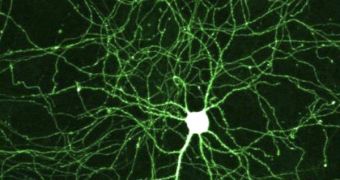Recent advancements in science have made it very clear that the electronics industry is heading towards a stage where all machines will attempt to mimic the way the human brain functions. One of the largest obstacles in the way of doing that may have just been eliminated.
Graphene, quantum computer chips and memristors are among some of the materials that are currently being touted as possible replacements for the ubiquitous silicone underlying today's electronics.
Whereas silicon largely has a single-function, each of the other materials is remarkable through its ambivalence, or through some set of properties that cannot be found in a specific combination anywhere else in the world.
Memristors (short for memory resistors) stand out from the crowd through the fact that they are organized to function very similarly to how neurons in the human brain do.
They passive, two-terminal circuit element that – in their solid-state form – can be combined to create crossbar latches, devices capable of replacing transistors in the next generation of computers.
But one of the main obstacles associated with operating memristors-based devices has been the fact that experts had no software capable of underlying the operations of such devices.
Recently, a science team managed to get past this obstacle by creating a software that could enable the creation of a digital brain of sorts in the not-too-distant future.
The new artificial intelligence (AI) software was developed by experts at the Boston University (BU) Neuromorphics Laboratory. The program will be combined with memristor technology developed by researchers at Hewlett-Packard, LiveScience reports.
This collaboration will be a part of the Modular Neural Exploring Traveling Agent (MoNETA) project, which is funded by the US Defense Advanced Research Projects Agency (DARPA). The effort has been announced in the latest issue of the top journal IEEE Spectrum.
The end result of this work is the research and development of a viable AI entity within 2-3 years.
Experts explain that the reason memristors are used for the job is the fact that their resistance to an electrical flow passing through is dictated for the most part by the characteristics of the current that passed through previously/
The same thing happens between nerve cells in our brains, where the intensity of electrical impulses allowed to pass through at one point depends on the intensity of previous impulses.
This is why people don't feel a small prick in the finger when they have a large burn, for example. The intensity of the prick is a lot smaller than that of the burn, and the electrical signals underlying it meet overexcited neurons, which cannot be further excited by a signal of lower intensity.

 14 DAY TRIAL //
14 DAY TRIAL //